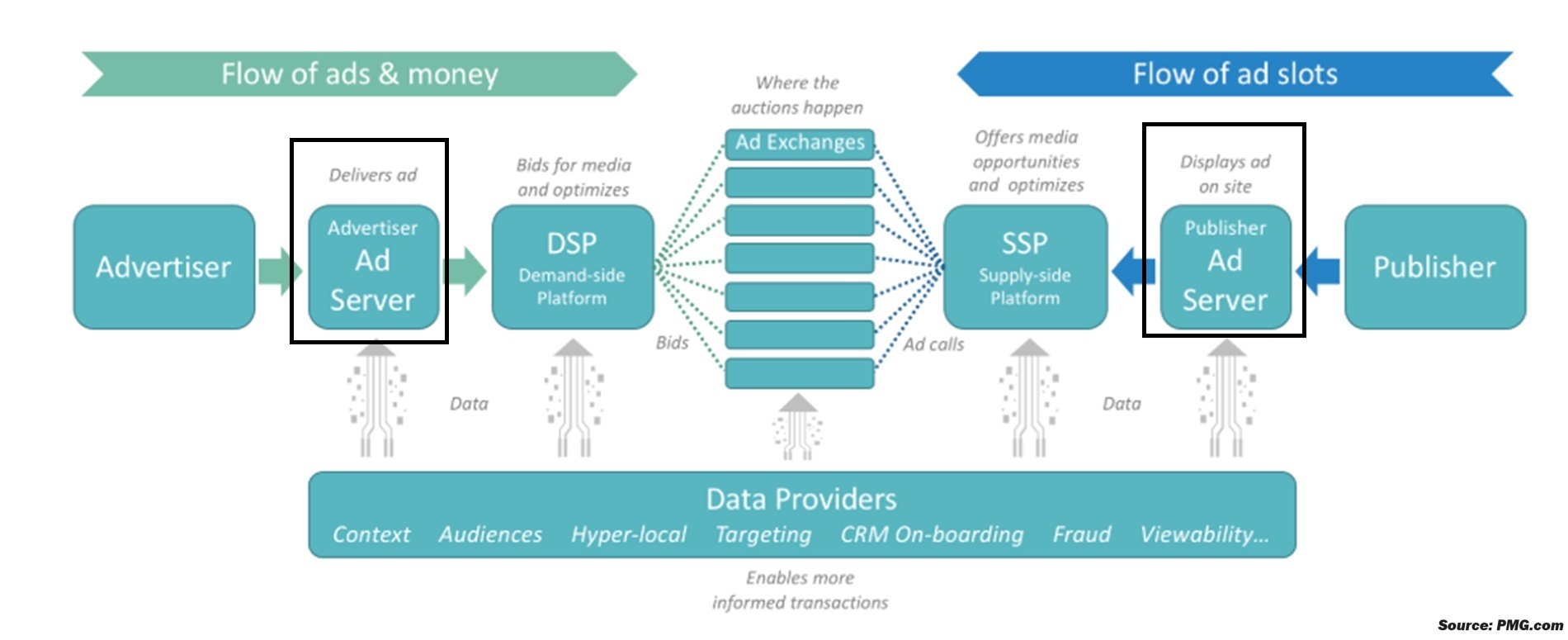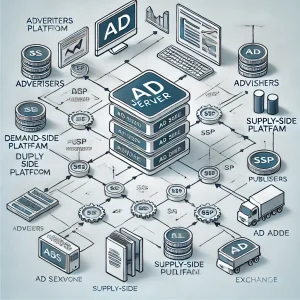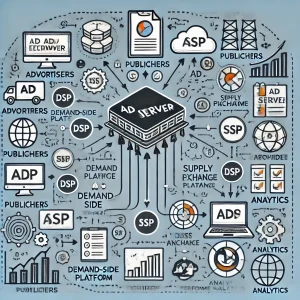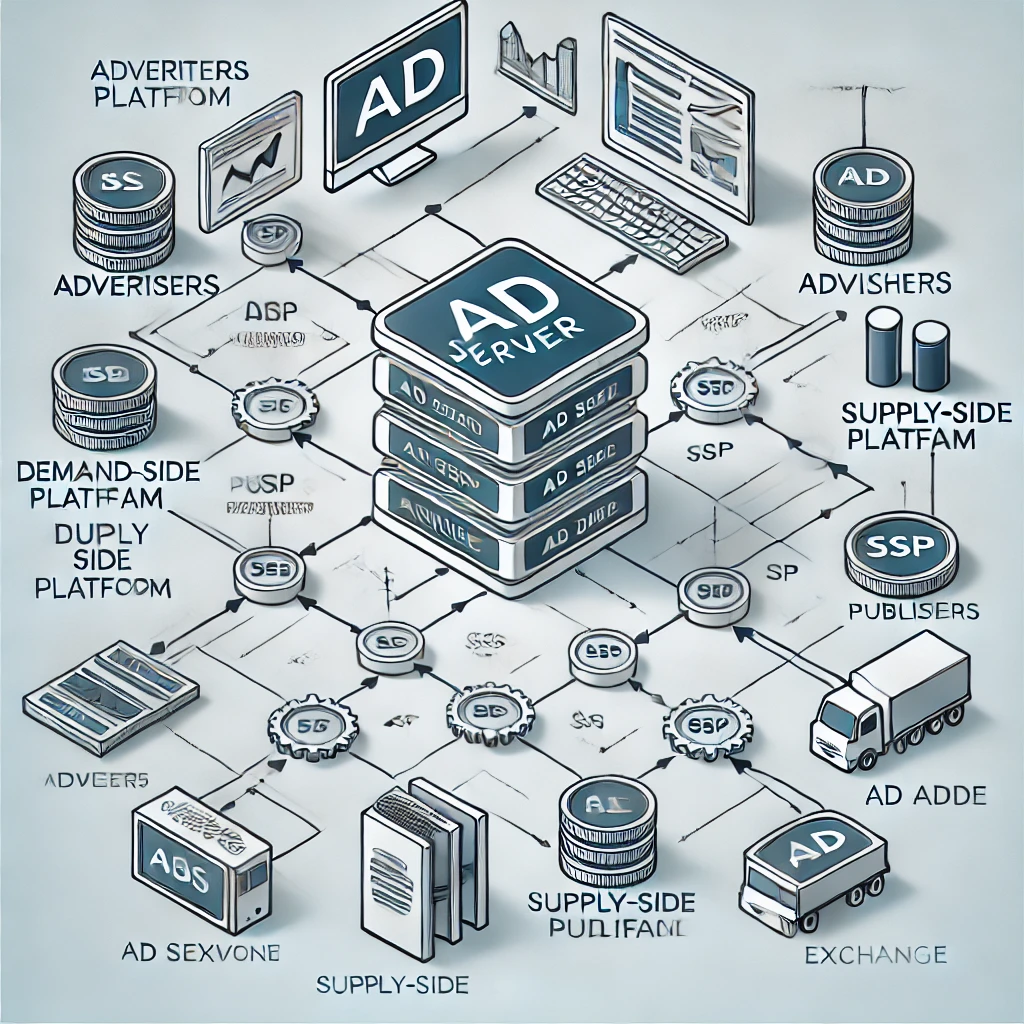Ad Servers: The Ad Monetization Ecosystem: Part 3
Ad servers are the backbone of the digital ad delivery system, responsible for storing, selecting, and serving ads to the right audience at the right time. Without them, the seamless and efficient delivery of billions of ads daily would be impossible.
For advertisers and publishers alike, understanding ad servers is crucial because these systems determine how effectively their campaigns reach the target audience. A well-configured ad server ensures that ads are shown to the right users, optimizing campaign performance and return on investment (ROI). Publishers, on the other hand, rely on ad servers to manage their ad inventory, maximize their revenue, and maintain a positive user experience by controlling ad placement and frequency.
Last post, we talked about Advertisers. In Part 3 of this series, we will explore into the world of ad servers, exploring what they are, how they work, and why they are indispensable in the digital advertising ecosystem.

Contents
What is an Ad Server?
An ad server is a sophisticated piece of software or a web-based platform that plays a crucial role in the digital advertising ecosystem. At its core, an ad server is responsible for managing the delivery of digital ads to users across various platforms and devices. It acts as the central hub where ads are stored, selected, and dispatched to the right audience based on predefined criteria set by advertisers or publishers.
Types of Ad Servers:
Ad servers are broadly categorized into two types, each serving a distinct role within the ad ecosystem: first-party ad servers (publisher-side) and third-party ad servers (advertiser-side).
-
First-Party Ad Servers (Publisher-Side):
- These ad servers are used by publishers to manage and serve ads on their own digital properties, such as websites, apps, or other online platforms. First-party ad servers enable publishers to control what ads are displayed on their content, when they appear, and how frequently users see them. They are crucial for optimizing ad placements to maximize revenue while maintaining a good user experience. Publishers use these servers to track the performance of the ads on their platforms and to report this data back to advertisers.
-
Third-Party Ad Servers (Advertiser-Side):
- On the other side of the spectrum are third-party ad servers, which are primarily used by advertisers and agencies. These servers allow advertisers to host and manage their ad creatives, set targeting parameters, and track the performance of their ads across multiple publishers and platforms. Third-party ad servers provide a centralized way to control and measure ad campaigns, ensuring consistency in tracking and reporting across different channels. They also enable advertisers to compare performance metrics across various publishers and make data-driven decisions to optimize their campaigns.
Key Features:
Continuing on “Ad Servers: The Ad Monetization Ecosystem: Part 3” post, Ad servers come equipped with a range of features that enhance their functionality and effectiveness in delivering and managing ads. Some of the essential features include:
-
Targeting:
- Ad servers offer advanced targeting capabilities that allow ads to be served to specific audiences based on various criteria such as demographics, location, device type, browsing behavior, and more. This precision targeting helps increase the relevance of the ads, leading to higher engagement and conversion rates.
-
Frequency Capping:
- This feature limits the number of times a particular ad is shown to the same user within a given time frame. Frequency capping is vital for preventing ad fatigue, where users become annoyed or disinterested after seeing the same ad repeatedly. By controlling the exposure of ads, ad servers help maintain a positive user experience while optimizing ad performance.
-
Ad Rotation and A/B Testing:
- Ad servers can rotate different ad creatives and conduct A/B testing to determine which versions perform better. This feature allows advertisers to experiment with various creative elements such as headlines, images, or call-to-action buttons, and refine their ads based on real-time data.
-
Reporting and Analytics:
- One of the most critical features of ad servers is their ability to generate detailed reports on ad performance. These reports include metrics such as impressions, clicks, conversions, and revenue generated. Ad servers provide actionable insights that help advertisers and publishers optimize their campaigns and inventory management.
-
Ad Scheduling:
- Ad servers allow users to schedule when ads should be shown. This feature is useful for aligning ad campaigns with specific events, promotions, or peak traffic times to maximize their impact.
-
Creative Management:
- Ad servers simplify the management of multiple ad creatives by providing a central repository where all ads are stored and easily accessed. This feature ensures that the correct version of an ad is delivered to the right audience and allows for quick updates or changes as needed.
Ad Delivery Process:
 Continuing on “Ad Servers: The Ad Monetization Ecosystem: Part 3” post, Once an Ad campaign is set up, the ad server takes over the task of delivering the ads. This process involves several steps:
Continuing on “Ad Servers: The Ad Monetization Ecosystem: Part 3” post, Once an Ad campaign is set up, the ad server takes over the task of delivering the ads. This process involves several steps:
-
User Interaction and Ad Request:
- When a user visits a website, opens an app, or engages with digital content, their device sends a request to the ad server to retrieve an ad. This request contains various details such as the user’s location, device type, browsing history, and other relevant data.
-
Ad Selection:
- The ad server analyzes the incoming request against the predefined targeting parameters of all active campaigns. It then selects the most appropriate ad to deliver based on factors like:
- Targeting Match: How well the user’s profile matches the targeting criteria of the available ads.
- Bid Price: In scenarios involving real-time bidding (RTB), the ad server evaluates the bid prices from different advertisers. The ad with the highest bid that meets the targeting criteria is chosen.
- Frequency Capping: The server checks whether the user has already seen the ad and if the frequency cap has been reached.
- Ad Rotation: If multiple ads are available that fit the criteria, the server may rotate them to ensure even distribution or to A/B test different creatives.
- The ad server analyzes the incoming request against the predefined targeting parameters of all active campaigns. It then selects the most appropriate ad to deliver based on factors like:
-
Ad Delivery:
- After the ad is selected, the ad server delivers it to the user’s device almost instantaneously. This delivery process happens within milliseconds, ensuring that the user’s experience remains seamless and uninterrupted.
Tracking and Reporting:
Continuing on “Ad Servers: The Ad Monetization Ecosystem: Part 3” post, Tracking and reporting are critical functions of ad servers that provide valuable insights into ad performance. Here’s how it works:
-
Tracking Metrics:
- As soon as the ad is delivered, the ad server starts tracking various metrics to measure its effectiveness. Key metrics include:
- Impressions: The number of times the ad is displayed to users.
- Clicks: The number of times users click on the ad.
- Conversions: The number of desired actions taken by users after interacting with the ad, such as making a purchase, signing up for a newsletter, or downloading an app.
- Engagement: Other forms of user interaction, such as watching a video ad to completion or hovering over an interactive ad.
- As soon as the ad is delivered, the ad server starts tracking various metrics to measure its effectiveness. Key metrics include:
-
Real-Time Data Collection:
- Ad servers collect and process this data in real-time, allowing advertisers and publishers to monitor the performance of their campaigns as they happen. This real-time data is crucial for making on-the-fly adjustments to improve campaign outcomes.
-
Reporting and Analytics:
- Ad servers generate detailed reports that provide a comprehensive view of the campaign’s performance. Reports typically include data on:
- CTR (Click-Through Rate): The percentage of impressions that resulted in clicks.
- Conversion Rate: The percentage of clicks that led to conversions.
- eCPM (Effective Cost Per Thousand Impressions): A metric that helps evaluate the revenue generated per 1,000 impressions.
- ROI (Return on Investment): The overall profitability of the ad campaign.
- These insights enable advertisers and publishers to optimize their strategies, whether it’s adjusting targeting parameters, reallocating budget, or refining ad creatives for better performance.
- Ad servers generate detailed reports that provide a comprehensive view of the campaign’s performance. Reports typically include data on:
AppLixir Ad Server
Before I finish my “Ad Servers: The Ad Monetization Ecosystem: Part 3” post, Ad servers are essential for optimizing ad revenue. AppLixir leverages precise targeting capabilities, and ensures that ads are displayed to the most relevant audiences. Through advanced techniques like RTB and dynamic allocation, AppLixir’s ad servers help publishers secure the highest possible price for their ad space, driving up effective cost per thousand impressions (eCPM) and overall revenue.
User experience is paramount in digital advertising, and Rewarded Video Ads play a crucial role in maintaining a positive and engaging environment. Ad servers, including those supporting Rewarded Video Ads, allow for precise control over ad placement, ensuring that ads are displayed in non-intrusive positions. This careful placement avoids disrupting the user experience, which is essential for keeping users engaged and satisfied.




